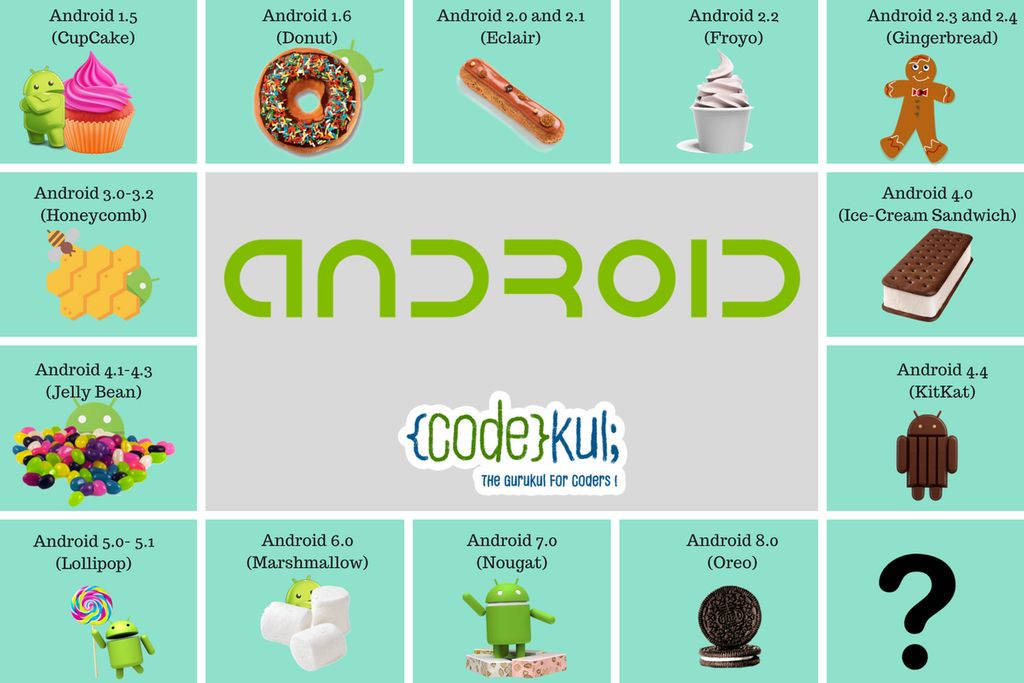What's Android?
Jun 21, 2019 • 24 views
Android is developed by the "Andy Rubin", the brains behind the Android. Before working for Google, Andy Rubin worked for Apple, where, a couple of his co workers gave him the nickname Android. Since the origin of Android, it's grown up to be one of the most dominant operating systems all over the world.
Android has become one of the most popular smartphone operating systems in the world and while out of all the smartphone users worldwide about 88% are using Android operating system, Google's operating system. In the year 2005, Google bought Android, which was making OS for phones as well as digital cameras. Even samsung once has the oppurtunity to buy Android but the compan thought that Android didn't have much potential. The first Android version was launched with HTC dream and the world is soon to get the Android 9.0 Pie update on Android smartphones.

As we have discussed earlier, Android is developed by Andy Rubin. After that Android version are getting updated and the names of all the versions are named with sweet items. It is because Andy Rubin loves the Desserts(sweet items). Moreover, All the versions of the Android appear in Alphabetical order. The version history is given below:
Cupcake(Android 1.5): Android had some Alphas and Betas for T-mobiles G1 before this release, but cupcake was its first confectionary named operating system.
Donut(Android 1.6): Android Donut was the OS that started making others forsake their Palm Pres and start taking Android more seriously. This update brought along universal search, text-to-speech superpowers and CDMA compatibility.
Eclair (Android 2.0): For Eclair, the camera got a little TLC with some much needed flash support, digital zoom, and white balance features to name a few, and how about them live wallpapers! Google also put some thought into a smarter keyboard that could select contact names as suggestions.
Froyo (Android 2.2): With Froyo, it was all about speed. The speed boost in 2.2 is fantastic, but what makes Froyo a truly great update is that it tightens bolts all across the entire platform.
Gingerbread (Android 2.3): Android added support for NFC, the super useful download manager, and even simple things like improved copy and paste. The user interface was overhauled with a darker theme that also continued Android’s speed uptick.
Honeycomb (Android 3.0): Honeycomb primarily focused on one thing and one thing only—tablets. The iPad released only months earlier in the fall of 2010, and Android needed an OS that could compete in a bigger form factor not fit for your pocket. This included what Google called a “Holographic” interface and a more intuitive keyboard for bigger devices.
Ice Cream Sandwich (Android 4.0): ICS reoriented toward the mobile phone with an updated interface and the complete dissolution of hardware buttons. This means we finally got the actions bar and the ever-important recent apps button.
Jelly Bean (Android 4.1): Jellybean had a super-improved voice assistant when searching and notifications finally didn’t suck, offering much more context from the drop-down menu. The homescreen also got revamped because now widgets could be resized and placed anywhere. Android was more customizable and powerful than ever.
KitKat (Android 4.4): Almost all know this version of Android. Even I am using this kitkat version only! Google Now was now better than ever with some prescient abilities that tried to guess what users wanted before they even asked, and Hangouts was upgraded with some much-needed SMS capabilities. This came in handy for Android’s push into cheaper phone markets with its Android One program.
Lollipop (Android 5.0 and 5.1): Icons, animations, and the multitasking menu were completely redone with Google’s Material Design approach, and the Android lockscreen became much more useful with better notification integration. Google continued opening up Google Now to third-party developers and thankfully added “silent mode” back in for notifications.
Marshmallow (Android 6.0): It does come with some awesome additions, including a new way of handling app permissions, a new and improved Google Now, and official fingerprint sensor support.
Nougat (Android 7.0 and 7.1): Nougat, Android’s latest release, brings features that Android users have been clamoring (and already enjoying on some other OSes) for awhile. The big one is multi-windowed support, meaning apps can finally be used in split screen views.
Oreo(Android 8.0 and 8.1): Android 8.0 allows activities to launch in picture-in-picture (PIP) mode. PIP is a special type of multi-window mode mostly used for video playback. It also introduces a new feature, Fonts in XML, which lets you use fonts as resources. This means, there is no need to bundle fonts as assets.
Pie(Android 9.0): Pie's most transformative change was its new gesture navigation system, which traded Android's traditional Back, Home, and Overview keys for a large, multifunctional Home button and a series of gesture-based commands. Pie also introduced a new dashboard of "Digital Wellbeing" controls intended to help with the ever-present challenge of balancing the digital and physical world.
Q(Android 10): Android Q introduces a new setup for security updates that'll allow for faster and more consistent rollouts across the entire ecosystem. And the software has plenty of other important under-the-hood improvements, including an updated permissions system that gives you more control over exactly how and when apps are able to access location data as well as expanded protection of unique device identifiers that can be used to track a device's activity over time.
So, these are the Android versions released till now. Will be updated later after release of new versions of Android.
